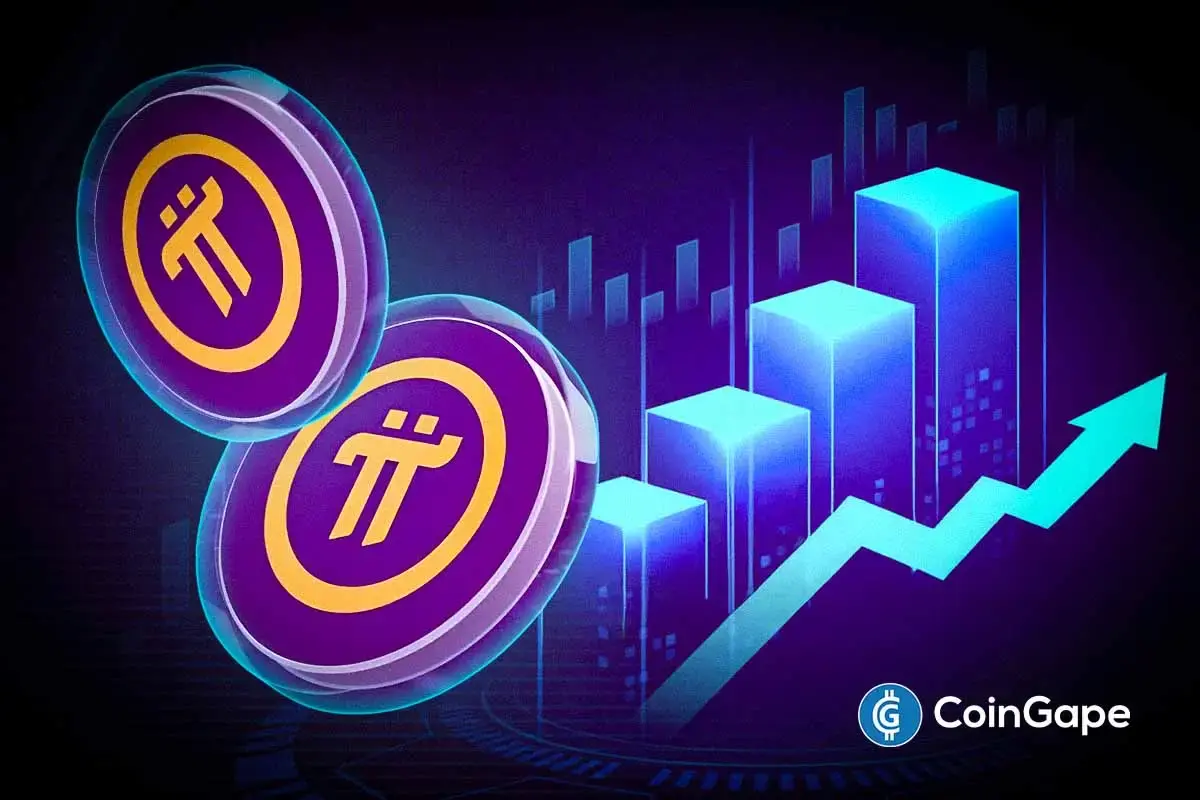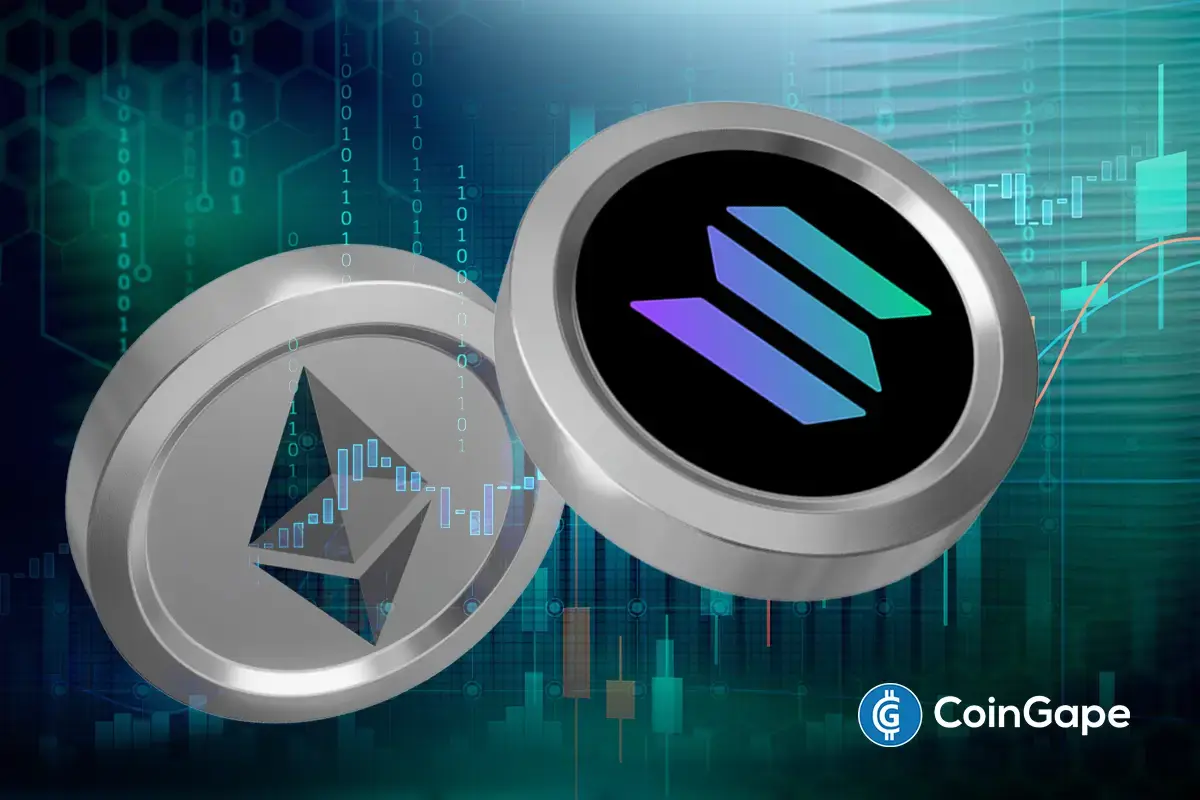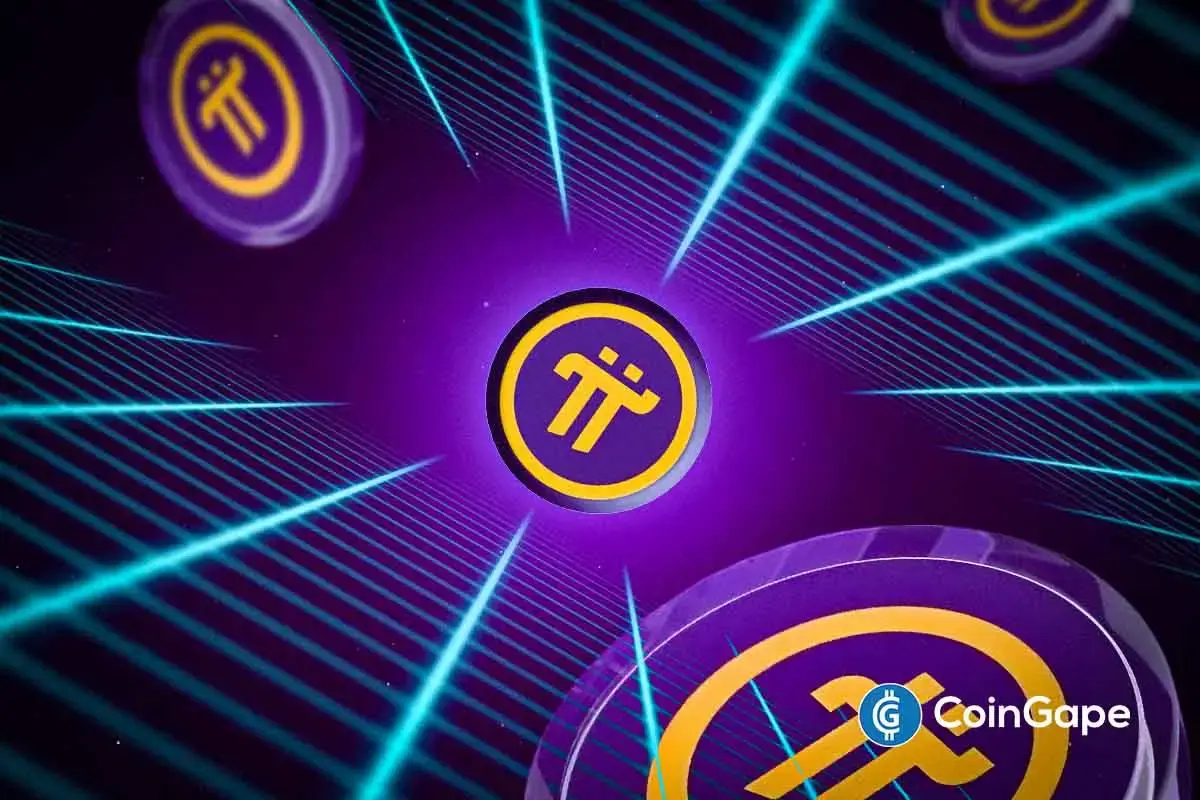Altcoin
Ethereum Network to Get Major Boost With SSF Roadmap, Says Vitalik Buterin

On Sunday, June 30, Ethereum co-founder Vitalik Buterin published a blog post explaining the road ahead for Ethereum and how they might have to part ways with the epoch-and-slot mechanism of its existing rollup-centric roadmap. Buterin proposes a new SSF mechanism to improve the transaction time latencies of the order of hundreds of milliseconds or even less.
Ethereum Eyes Single-Slot Finality
Currently, the Ethereum Gasper consensus employs a slot-and-epoch mechanism wherein validators cast votes in each 12-second slot. Also, all validators get the opportunity to vote once, over 32 slots. Later, a PBFT-like consensus algorithm takes care after two epochs (12.8 minutes), thereby providing a strong economic assurance known as finality. However, there are two major concerns with this approach.
- The complexity and several interaction bugs between the two slot-by-slot voting mechanism as well as the epoch-by-epoch finality mechanism.
- The 12.8-minute finality period is pretty slow and inconvenient for the users.
To simplify this, Buterin proposes a single-slot finality mechanism similar to the Tendermint consensus, wherein Block-N is finalized even before the creation of Block N+1. The major difference from Tendermint is the retention of the “inactivity leak” mechanism. This will allow the Ethereum blockchain to continue and recover even if nearly one-third of validators go offline. Vitalik Buterin calls this a “Secure Speed Finality” SSF mechanism.
Also Read: Vitalik Buterin Spotlights Innovative Idealist DApps in Web3
Addressing A Few Challenges With the SSF Mechanism
Vitalik Buterin also highlighted some key challenges associated with Single-slot finality (SSF) in the Ethereum ecosystem. He explained that the naive implementation of the SSF would require every Ethereum staker to publish two messages every 12 seconds, imposing a significant load on the Ethereum network. In his blog post, Buterin said:
“While there are clever ideas to mitigate this issue, including the recent Orbit SSF proposal, it remains a challenge. Although SSF significantly improves user experience by accelerating ‘finality,’ it doesn’t eliminate the need for users to wait 5-20 seconds.”
While implementing the SSF mechanism in Ethereum, Buterin suggests implementing Orbit-like techniques in order to reduce the total number of validators signing per slot and address the key goal of lowering 32 ETH minimum staking.
“This approach might cause the slot time to increase to approximately 16 seconds,” added Buterin. However, he added: “Designs like Orbit SSF are very recent, suggesting that the design space of slot-and-epoch designs where something like Orbit SSF is the epoch is still quite under-explored”.
The Ethereum developers are still figuring out the ideal solution in order to improve the finality. Last month, Buterin shared updates made with Ethereum Layer-2 solutions. The Ethereum L2 activity has touched fresh all-time highs recently.
Ethereum is thriving as an ecosystem right now with L2 activity hitting fresh all time highs every other day and the L1 roadmap being executed on with laser precision
Meanwhile, crypto twitter is acting like Ethereum is failing and in dire need of an emergency intervention
— sassal.eth/acc 🦇🔊 (@sassal0x) July 1, 2024
The Ethereum Layer-2 Blast recently announced the launch of its native token and BLAST airdrop.
Also Read: ETH Price Shoots 5% As Whale Activity Spikes Ahead of Ethereum ETF Approval
The presented content may include the personal opinion of the author and is subject to market condition. Do your market research before investing in cryptocurrencies. The author or the publication does not hold any responsibility for your personal financial loss.
Altcoin
Expert Says Solana Price To $2,000 Is Within Reach, Here’s How

While investors are scanning the horizon for a short-term Solana (SOL) rally, cryptocurrency expert CryptoCurb is predicting an ultra-bullish price movement. CryptoCurb argues that a Solana price of $2,000 is “absolutely realistic” given the current fundamentals and on-chain indicators.
Solana Price To $2,000 Is A Realistic Projection
Pseudonymous cryptocurrency analyst CryptoCurb is predicting a massive growth spurt for Solana in the near future. In an X post, the expert says the Solana price can achieve a valuation of $2,000 given its impressive network metrics.
He hinges his projection on several factors, including Ethereum’s previous price performance. Ethereum price spiked to a $600 billion market capitalization during the last cycle with its steep fees and scalability issues.
A $2K SOL price will translate to a $1 trillion market capitalization that will see it flip Ethereum as the largest altcoin. CryptoCurb notes that if Ethereum can post impressive figures during the last cycle, Solana has the capabilities to be valued at $2,000.
“2K is absolutely realistic if Solana keeps its global adoption pace with minimal disruptions and continues to scale,” said CryptoCurb.
Rising network inflows are expected to send the Solana price on a short-term rally to $150 before a big push to $2K. Currently, the Solana price is pegged at $140 with a market capitalization of $72.6 billion, making CryptoCurb’s prediction an uphill climb.
A Wave Of Impressive Metrics Around SOL
While CryptoCurb did not disclose an exact timeline for his $2,000 prediction, he points to a short-term seismic price increase. The expert his backing his predictions with a swathe of network metrics pointing to fresh bullishness.
Solana has the highest number of active addresses over the last seven days at 28.4 million. The network led the pack for transactions at 369 million, trouncing Tron, BNB Chain, Base, and Bitcoin.
Solana is finding application in several Web 3 verticals given its speed, low cost, and scalability. In the last week, the Solana price has risen by nearly 7% while 24-hour trade volume has risen by 36%.
Last week, Canada launched the first SOL ETF with prices projected to surpass $250, reversing a forming death cross. Solana open interest crossed 5.5 billion, climbing by 10% amid rising whale activity in the ecosystem.
Rising bullish metrics for the network suggest that SOL will reach $200 before ETH reclaims $3,000.
Disclaimer: The presented content may include the personal opinion of the author and is subject to market condition. Do your market research before investing in cryptocurrencies. The author or the publication does not hold any responsibility for your personal financial loss.
Altcoin
Expert Predicts Pi Network To Reach $5 As Whales Move 41M Pi Coins Off Exchanges

Crypto expert PiMigrate recently predicted that the Pi Network price could reach a new all-time high (ATH) of $5. This comes amid recent whale movements, with these investors moving 41 million Pi Coins off exchanges.
Expert Predicts Pi Network To Reach $5
In an X post, PiMigrate stated that Pi Network’s journey to $5 has just begun. He remarked that the altcoin has very strong support at $0.6. As such, the expert believes that this $5 price target is a “very possible valuation.” PiMigrate added that good utilities will push the altcoin to this target.
Another expert, Moon Jeff, also predicted that the Pi Coin price can reach this $5 target. In an X post, the expert concluded that the altcoin can reach this price target following his analysis.


He alluded to his accompanying chart, which he described as being bullish, indicating that the Pi Network price can indeed reach this $5 target. The chart also showed that the altcoin has formed a strong support level at its current price.
Crypto analyst Xia also recently claimed that the Pi Coin’s momentum is building fast after it surged past the $0.63 mark with strong volume. She also noted that the RSI and MACD are turning bullish for the altcoin.
This bullish outlook for the Pi Coin comes amid recent huge whale accumulation. A Pi community page revealed that these investors moved a whopping 41 million coins (around $27 million) off exchanges in 48 hours. Specifically, these whales moved over 13 million Pi Coins from OKX to several wallets. This presents a bullish outlook for the coin since exchange supply is declining.
Pi Needs To Reclaim This Symmetrical Triangle
While analyzing the Pi Network’s price on the higher timeframe, analyst Alpha Crypto stated that the altcoin needs to reclaim its symmetrical triangle to resume its upward move.


The analyst remarked that once Pi reclaims this structure, market participants can look for a potential long setup. He added that on the flipside, if the price falls outside the triangle, it could open up a short opportunity. Alpha Crypto urged traders to wait for confirmation rather than rushing.
From a fundamentals perspective, top exchange listings could send the Pi Coin price higher. CoinGape recently reported that top exchange HTX had fueled listing speculations with a cryptic post on its X platform. Meanwhile, Pi community members remain hopeful that Binance will soon list the altcoin.
These community members will have their eyes on the Consensus 2025 conference, where Pi Network founder Nicolas Kokkalis will allegedly join an exclusive list of industry players to speak at the event.
Expert Dr. Altcoin described the event as a pivotal moment for Pi Network, as it will provide an opportunity for the Pi team to promote the network’s ecosystem.
At the time of writing, the Pi Coin price is trading at around $0.63, down almost 3% in the last 24 hours. Trading volume is also down over 36%, with $96.34 million traded during this period.
Disclaimer: The presented content may include the personal opinion of the author and is subject to market condition. Do your market research before investing in cryptocurrencies. The author or the publication does not hold any responsibility for your personal financial loss.
Altcoin
Binance Traders Go Big On Dogecoin—Majority Holding Long Positions


Dogecoin investors have high faith in the future of the meme currency despite its recent price fall, market data showed, Tuesday.
Dogecoin fell to $0.153 as of April 16 after its price reached a high of $0.168 on April 13, down by 3% in the last 24 hours. This is after the recent price hike following US President Trump’s tariff halt declaration on certain countries on April 10.
Long Positions Dominate Market Activity
The mood among traders on Binance is firmly bullish for the future prospects of Dogecoin. Data from Coinglass show that over 74% of trading accounts have long positions in the cryptocurrency, while only 25% going short. This places the long-to-short account ratio at 2.90, proving widespread optimism among traders.
Long positions increased quickly on April 12, which shows that investors expect Dogecoin to bounce back from its present correction period. They are willing to pay premiums to maintain their positions, as evidenced by positive OI-weighted funding rate signals that have remained above zero since April 7.

Long|Short DOGE by accounts. Source: Coinglass
Holder Patterns Indicate Diversified Strategies
IntoTheBlock statistics reveal substantial shifts in the manner by which people are holding Dogecoin. Investors holding DOGE for over a year increased by marginally 0.13%. These types of “hodlers” as they are called within cryptocurrency forums constitute a solid support base for the currency.
Source: IntoTheBlock
In the meantime, mid-term holders (holders of DOGE for one to 12 months) decreased by 2.50%. Short-term traders experienced the largest increase, with addresses holding for less than 30 days rising by 109%. This new trader surge reflects increasing demand for quick profit from Dogecoin price action.
Technical Analysis Points To Future Price Directions
One TradingView account, FuaCompany, has plotted Dogecoin’s movement in what analysts call a rising channel. On the basis of this trend, two general scenarios for Dogecoin’s future price are on offer.
The first scenario shows Dogecoin rebounding from the lower edge of this channel and continuing to trend upwards. This would comply with what occurred before when the price rebounded back from $0.05 to higher levels.
The second scenario entails a temporary drop below the bottom line of the channel, plunging to around $0.08 before surging higher, both scenarios ultimately carrying long term bullish signals, with some projections estimating Dogecoin to even reach $0.70.
Weekly Performance Still Positive Despite Slump
Despite the recent slump, Dogecoin is still positive overall on the week. In fact, the cryptocurrency has shown quite a hefty rise-on-week for about 7.40% during the past week in spite of that dip.

DOGE price up in the last week. Source: CoinMarketCap
The price started off in early April with an initial volatility before strengthening with the Presidential Tariff declaration by Trump. Following the monthly peak on April 13, reaching 0.168, Dogecoin encountered what traders know to be a consolidation phase, where prices continue to trend sideways while forming in preparation for another move.
According to market observers, this pattern of gains and then consolidation is typical in cryptocurrency markets. The strong level of long positions shows most traders view the current price drop as just a temporary hiccup and not the start of a larger bearish trend.
Featured image from CoinFlip, chart from TradingView

Editorial Process for bitcoinist is centered on delivering thoroughly researched, accurate, and unbiased content. We uphold strict sourcing standards, and each page undergoes diligent review by our team of top technology experts and seasoned editors. This process ensures the integrity, relevance, and value of our content for our readers.
-

 Altcoin24 hours ago
Altcoin24 hours agoUniswap Founder Urges Ethereum To Pursue Layer 2 Scaling To Compete With Solana
-

 Ethereum20 hours ago
Ethereum20 hours agoEthereum Consolidates In Symmetrical Triangle: Expert Predicts 17% Price Move
-

 Market20 hours ago
Market20 hours agoToday’s $1K XRP Bag May Become Tomorrow’s Jackpot, Crypto Founder Says
-

 Altcoin23 hours ago
Altcoin23 hours agoWhat’s Up With BTC, XRP, ETH?
-

 Market14 hours ago
Market14 hours ago1 Year After Bitcoin Halving: What’s Different This Time?
-

 Market18 hours ago
Market18 hours agoMELANIA Crashes to All-Time Low Amid Insiders Continued Sales
-

 Ethereum22 hours ago
Ethereum22 hours agoEthereum Accumulators At A Crucial Moment: ETH Realized Price Tests Make-Or-Break Point
-

 Market19 hours ago
Market19 hours agoCharles Schwab Plans Spot Crypto Trading Rollout in 2026

















✓ Share: